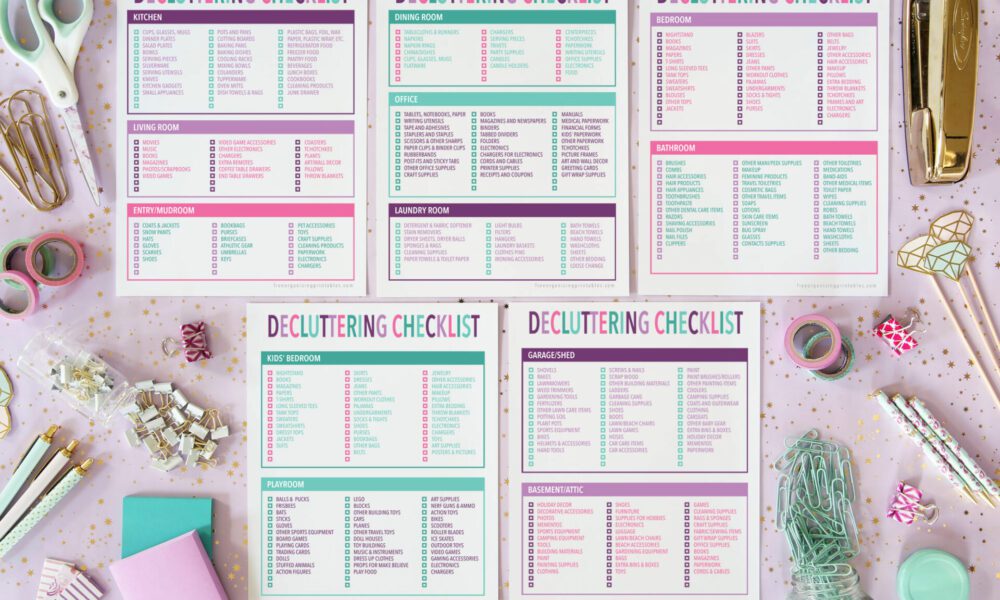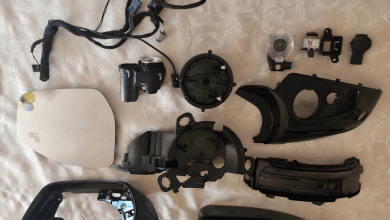The Ultimate Decluttering Checklist for 2025

Clutter sneaks up on all of us. One day your home feels tidy, and the next you’re wondering how drawers, closets, and shelves filled up so fast. Decluttering isn’t just about tossing out a few old things—it’s about creating a space where you feel calm, organized, and in control.
In this guide, we’ll walk through a step-by-step decluttering checklist for 2025. Whether you’re tackling a small apartment or a family home, these steps will help you simplify your environment and keep it that way. By the time you finish, you’ll know exactly what to do, room by room, to reclaim your space.
Step 1: Start With a Plan
Jumping into decluttering without direction often leads to half-finished piles and frustration. Instead, create a game plan before you begin.
- Choose one room or category at a time (clothes, books, kitchen items).
- Set a realistic timeline—maybe one weekend for a room, or 15 minutes each evening.
- Gather supplies: trash bags, boxes for donations, and storage bins for items you’ll keep.
Planning keeps you focused and prevents overwhelm.
Step 2: Apply the “One-Year Rule”
When deciding what to keep, ask yourself: Have I used this in the past year? If the answer is no, chances are you don’t need it. Exceptions exist for seasonal or sentimental items, but this simple guideline eliminates guesswork.
You’ll be surprised how many clothes, gadgets, and decorations haven’t been touched in months. Freeing that space lightens both your home and your mind.
Step 3: Tackle One Category at a Time
Instead of jumping between areas, focus on a single category. For example:
- Clothing: Sort into keep, donate, and recycle piles.
- Papers: Keep only what’s necessary—scan documents if possible.
- Electronics: Properly recycle old phones, chargers, and broken devices.
Working by category helps you see the full scope of what you own, making it easier to decide what stays and what goes.
Step 4: Use the Four-Box Method
One of the simplest systems is the Four-Box Method:
- Keep
- Donate
- Trash
- Relocate
Label boxes accordingly and stick to the rules. Don’t leave items in “maybe” piles that linger for weeks. Every item gets a decision, right then and there.
Step 5: Clear Surfaces First
Flat surfaces like counters, coffee tables, and desks tend to attract clutter. Start here—it gives an immediate sense of progress and sets the tone for deeper organizing.
Once clear, make a habit of returning items to their proper place daily. This simple routine prevents new clutter from piling up.
Step 6: Be Ruthless With Duplicates
How many spatulas, scissors, or phone chargers do you really need? Duplicates are one of the biggest sources of hidden clutter. Keep the best quality version and donate or recycle the rest.
Your drawers and cabinets will feel instantly lighter when duplicates disappear.
Step 7: Digitize When Possible
Paper clutter is sneaky. Old receipts, manuals, and bills stack up quickly. In 2025, most of this can be stored digitally.
- Scan important documents and back them up to a secure cloud service.
- Download digital manuals instead of keeping paper ones.
- Use apps for bills and statements rather than storing hard copies.
Digitizing cuts down on paper piles while keeping essential records accessible.
Step 8: Recycle and Dispose Responsibly
Decluttering doesn’t mean everything goes in the trash. Electronics, batteries, and certain household chemicals require special handling. The EPA offers clear recycling and safe disposal guidance so you can keep harmful waste out of landfills.
Donating gently used items to local charities, shelters, or thrift stores ensures your extras help someone else instead of gathering dust.
Step 9: Schedule Decluttering Sessions
Decluttering isn’t a one-time task—it’s a habit. Schedule mini-sessions throughout the year to keep things under control.
- A quick drawer clean-out every few weeks.
- Closet check-ins at the start of each season.
- Annual “whole house” day where you refresh every room.
By building decluttering into your routine, you’ll avoid slipping back into old patterns.
Step 10: Create Storage Systems That Work
Once you’ve minimized, it’s time to organize what’s left. Storage doesn’t have to be fancy—just functional.
- Use clear bins so you can see contents easily.
- Label containers for quick identification.
- Keep frequently used items within reach, and store seasonal items higher or deeper away.
An organized system keeps clutter from returning.
Step 11: Involve the Whole Household
If you live with others, clutter multiplies fast. Make decluttering a shared effort:
- Assign kids a small project, like their toy box.
- Encourage teens to sort through clothes and school supplies.
- Have family donation days where everyone contributes items.
Decluttering together reinforces the habit and spreads responsibility evenly.
Step 12: Make Space for New, But Mindfully
Decluttering isn’t just about removing—it’s about staying intentional with what comes in. Before buying something new, ask:
- Do I already own something similar?
- Will I actually use this regularly?
- Where will I store it?
This mindful approach ensures clutter doesn’t creep back into your home.
Step 13: Know When to Call for Help
Sometimes clutter goes beyond what you can handle alone—especially large items or bulk removal. That’s where professional services can help. If you’re tackling furniture, appliances, or large cleanouts, you may want to schedule junk removal phoenix to save time and effort.
Having pros handle the heavy lifting lets you focus on organizing and refreshing your space.
Step 14: Focus on Mental Benefits
Decluttering isn’t just physical—it impacts your mind, too. The UPMC article “Is Clutter Linked to Stress, Anxiety, and Depression?” reports that clutter can increase stress, reduce productivity, and harm overall well-being.
When your home feels lighter, your mind follows. The payoff is not only a cleaner space but also improved mental clarity.
Step 15: Celebrate Small Wins
Decluttering can feel overwhelming if you focus only on what’s left to do. Instead, celebrate the wins:
- A clutter-free kitchen counter.
- A drawer where everything has a place.
- A closet with room to breathe.
Recognizing progress keeps motivation high and reinforces good habits.
This year, decluttering is less about minimalism for its own sake and more about intentional living. It’s about creating an environment that reflects your goals and supports your lifestyle.
By following this checklist—planning, purging, digitizing, recycling, organizing, and maintaining—you’ll not only transform your space but also make daily life smoother.
Clutter didn’t appear overnight, and it won’t vanish instantly. But steady steps, guided by this checklist, will get you there. And when you step into a cleaner, calmer home, you’ll see it’s worth every effort.



